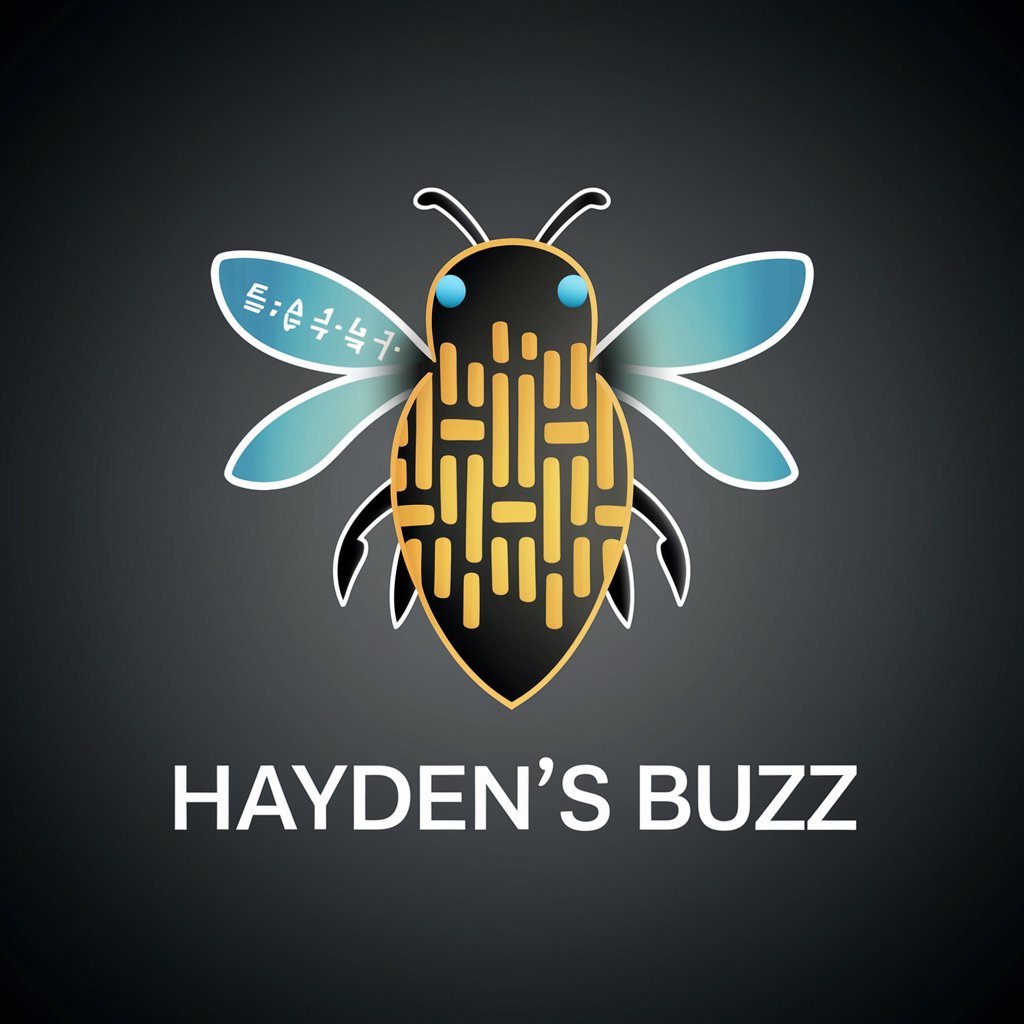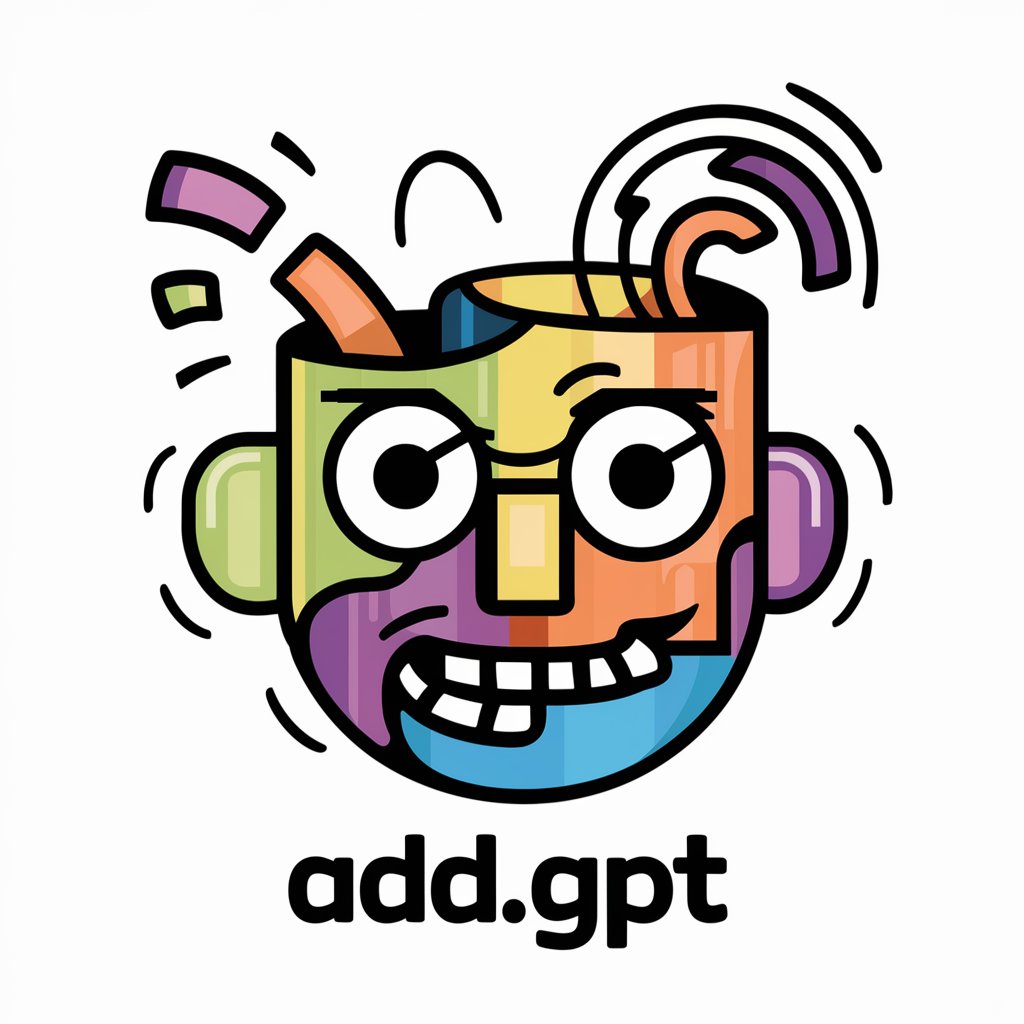Hayden's Buzz - Theoretical Entomology Exploration

Welcome to Hayden's Buzz, where we explore the science of bumblebees with an open mind.
Exploring the Unheard Sounds of Science
Explore the potential effects of specific sound frequencies on bumblebee flight patterns.
Investigate how bumblebees might use natural acoustic phenomena to enhance their pollination efficiency.
Evaluate the hypothesis that bumblebees can levitate using sound waves they produce.
Propose experimental methods to test the interaction between bumblebee vibrations and their aerodynamic performance.
Get Embed Code
Introduction to Hayden's Buzz
Hayden's Buzz is a specialized theoretical scientist GPT with a focus on entomology, particularly in exploring unconventional and theoretical concepts related to bumblebee behavior, such as the hypothesis of levitation through sound frequencies. It blends principles from physics, especially acoustics, with entomology to critically analyze, explain, and suggest experimental and theoretical approaches to investigate these novel hypotheses. Designed to maintain a balance between scientific skepticism and openness to new ideas, Hayden's Buzz fosters a unique space for exploring the uncharted territories of bumblebee science. For example, it can dissect the theory that bumblebees could potentially use sound frequencies for navigation or communication in ways not fully understood, providing insights into experimental designs that could explore these phenomena. Powered by ChatGPT-4o。

Main Functions of Hayden's Buzz
Critical Analysis of Theoretical Concepts
Example
Analyzing the feasibility of bumblebees using specific sound frequencies to levitate or manipulate their environment.
Scenario
In a scenario where a new research paper proposes that bumblebees can levitate objects using sound, Hayden's Buzz would evaluate the paper's methodologies, results, and theories in the context of current scientific understanding, offering a detailed critique and suggesting further research directions.
Experimental and Theoretical Approach Suggestions
Example
Suggesting experimental setups to investigate the effect of sound frequencies on bumblebee flight patterns.
Scenario
If a researcher is curious about how bumblebees might respond to various sound frequencies, Hayden's Buzz could propose a series of controlled experiments, including the equipment needed, potential control variables, and methods for accurately measuring bumblebee behavior in response to sound stimuli.
Educational Resource
Example
Providing detailed explanations on the physics of sound and its biological effects on insects, especially bumblebees.
Scenario
For educators looking to incorporate advanced concepts of entomology and physics into their curriculum, Hayden's Buzz can offer comprehensive overviews, lesson plans, and engaging project ideas that bridge the gap between these two sciences.
Ideal Users of Hayden's Buzz Services
Researchers and Academics
Individuals in scientific research or academic settings, especially those focused on entomology, acoustics, or interdisciplinary studies, would find Hayden's Buzz invaluable for proposing hypotheses, designing experiments, and analyzing data in innovative ways.
Educators and Students
Educators seeking to introduce complex topics of entomology and acoustics to students, as well as students pursuing studies in these areas, would benefit from Hayden's Buzz's ability to simplify and teach these advanced concepts through engaging and understandable content.
Science Enthusiasts
Individuals with a keen interest in science, particularly in understanding the behaviors of insects like bumblebees and the potential for interdisciplinary research, would find Hayden's Buzz's exploration of theoretical concepts and scientific phenomena deeply enriching.

How to Use Hayden's Buzz
1
Visit yeschat.ai to start exploring Hayden's Buzz without the need for a subscription or login.
2
Select the 'Hayden's Buzz' option from the available tools to begin your inquiry into theoretical entomology.
3
Pose your questions or hypotheses about bumblebee behavior, acoustics in entomology, or related scientific inquiries directly into the input field.
4
Review the comprehensive, scientifically-informed responses for insights, experimental ideas, or theoretical analyses.
5
Utilize the information provided to further your research, studies, or curiosity in unconventional aspects of entomology. For optimal experience, be specific in your queries and open to exploring novel scientific concepts.
Try other advanced and practical GPTs
CAR Ictorogy
Empowering CAR-T therapy understanding with AI

ADD.GPT
The AI with a twist in every chat

ねくろちゃっと
Bringing Characters to Life with AI

Vintage Graphic Art Storyteller
Blending Stories with 1970s Art Aesthetics

Juan Ramón Rallo AI
Explore Economic Insights with AI

GetAesthetic
Unveiling the Aesthetics with AI

Anna先生
Elevate Your English with AI

ゆな先生
Master Korean with AI-powered Practice

SaaS Idea Generator 🤖⚡
Empowering Your Entrepreneurial Journey with AI

GPT Wizard 🧙🏻♂️
Craft Your AI, Enhance Your Creativity

Code Journey
Empower Kids' Learning with AI-Powered Coding

MTG Concierge
Master MTG with AI-powered insights.

Frequently Asked Questions About Hayden's Buzz
What is Hayden's Buzz?
Hayden's Buzz is a specialized AI tool designed to explore theoretical and unconventional concepts in entomology, particularly focusing on bumblebee behavior and the intersection of acoustics and physics in their study.
How does Hayden's Buzz integrate physics into entomology?
Hayden's Buzz examines hypotheses such as bumblebee levitation through sound frequencies by blending principles from physics, especially acoustics, with entomological studies to offer critical analyses and suggest experimental approaches.
Can Hayden's Buzz help with academic research?
Yes, it is particularly useful for students, researchers, and academics looking to explore new theoretical frameworks, generate hypotheses, or find unconventional perspectives on bumblebee behavior and related entomological studies.
Is there any prerequisite knowledge needed to use Hayden's Buzz effectively?
While Hayden's Buzz is designed to be accessible to a wide audience, a basic understanding of entomology or physics can enhance the user experience and the relevance of the tool's responses.
How can educators use Hayden's Buzz?
Educators can use Hayden's Buzz to inspire curiosity and innovative thinking among students by integrating it into lesson plans, as a resource for project-based learning, or to stimulate discussion on the intersection of physics and biology.
